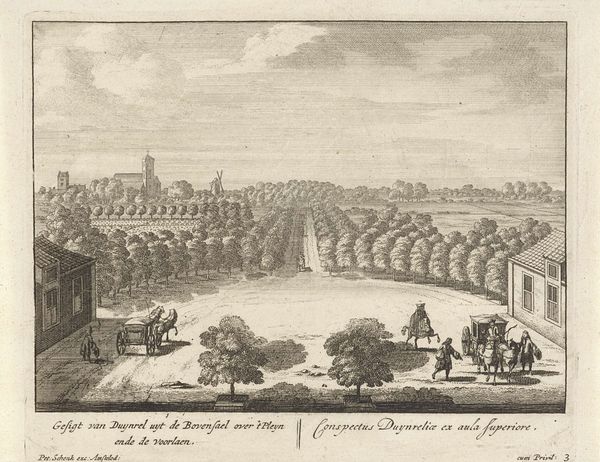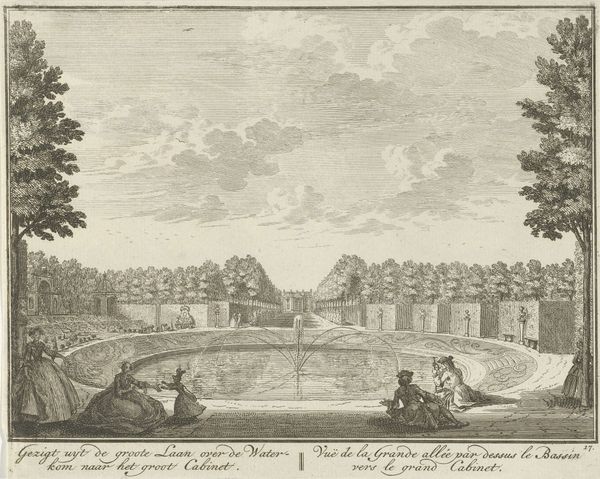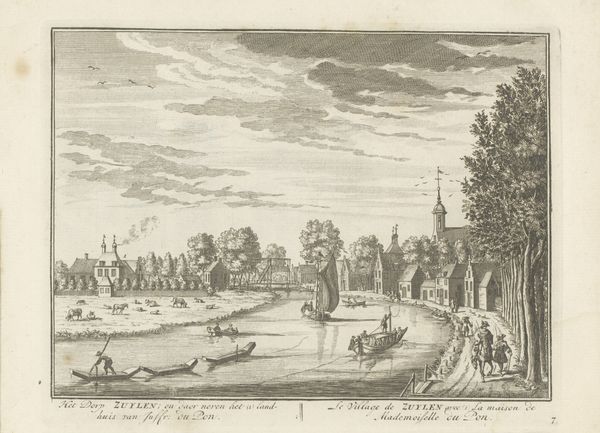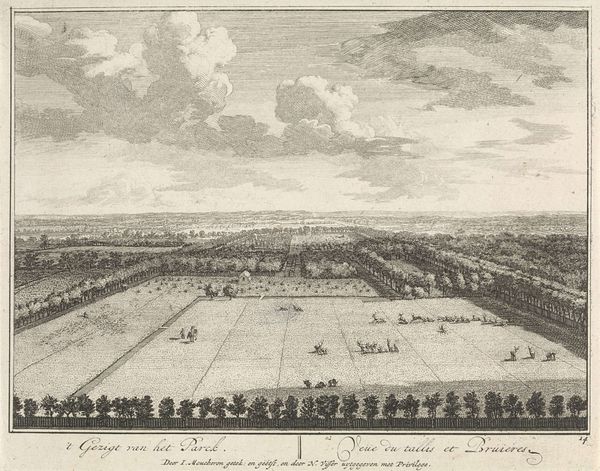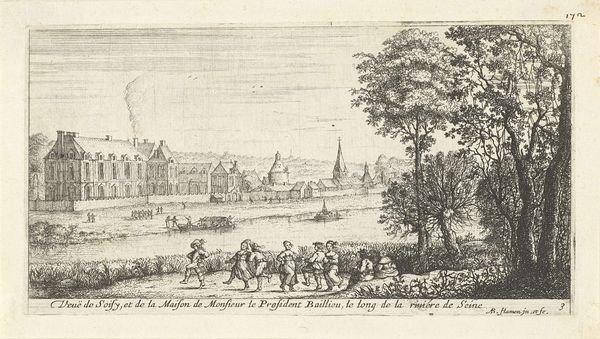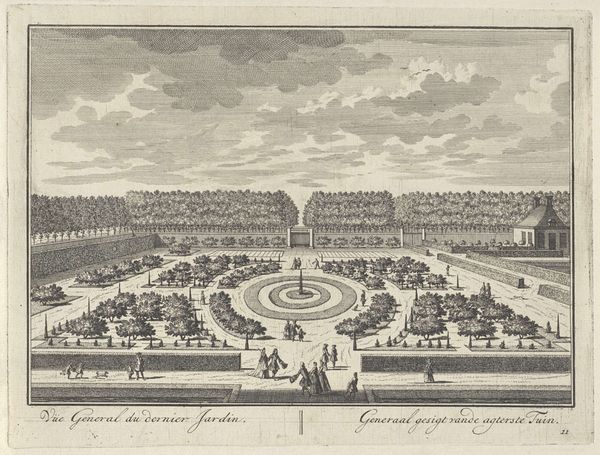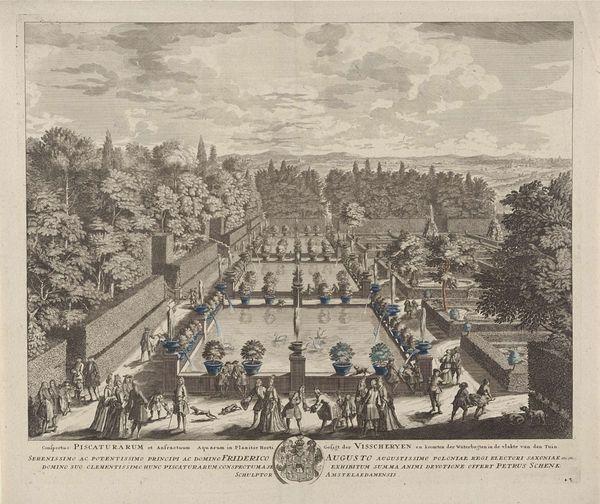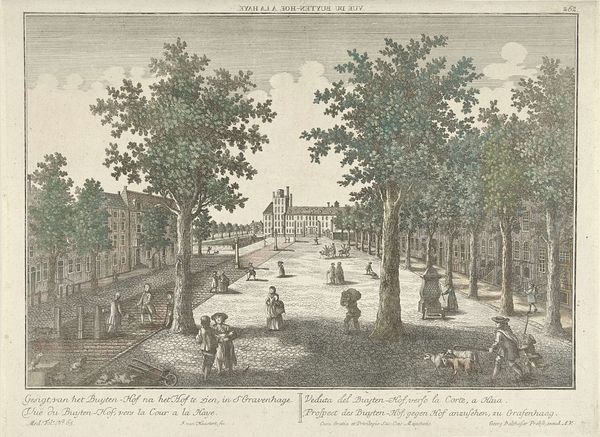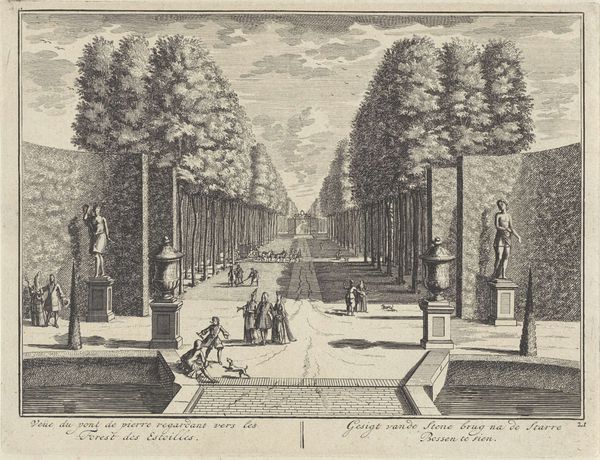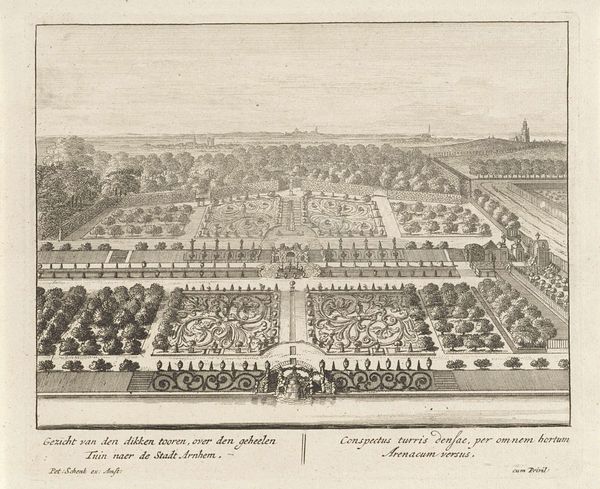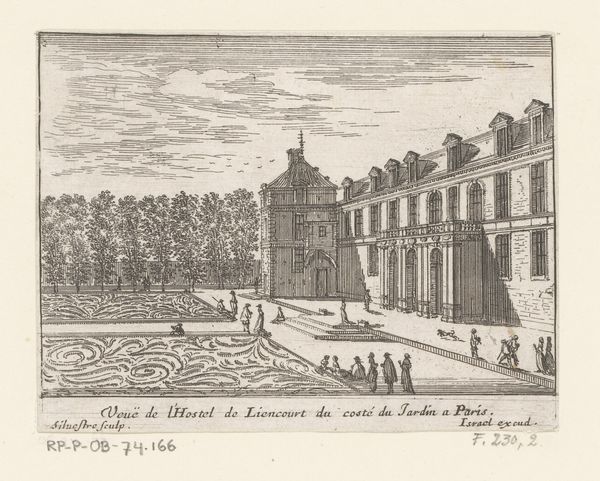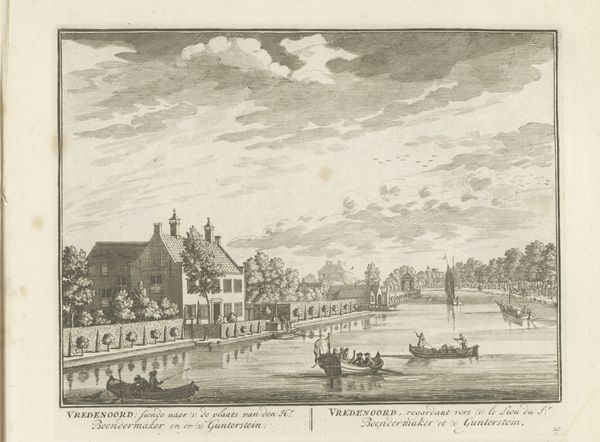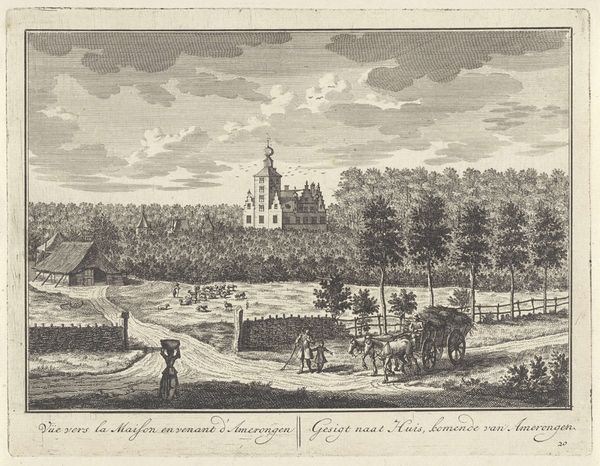
Gezicht op de weg naar Rijswijk met rechts de toegangsbruggen naar Huis ter Nieuburch 1697
0:00
0:00
print, etching, engraving
#
dutch-golden-age
# print
#
etching
#
old engraving style
#
landscape
#
perspective
#
cityscape
#
genre-painting
#
engraving
Dimensions: height 158 mm, width 194 mm
Copyright: Rijks Museum: Open Domain
Editor: Here we have Pieter Schenk's "View of the Road to Rijswijk with the Entrance Bridges to Huis ter Nieuburch," an etching and engraving from 1697. The print has a lovely sense of depth, but also feels somewhat…oppressive with its rigid order. What do you see in this piece? Curator: I see a potent visual statement on power and control. The meticulously planned landscape, the rigid perspective, it all speaks to a desire to dominate both nature and society. Think about the historical context: the Dutch Golden Age, a period of immense wealth built on colonial exploitation. Editor: So you’re saying the seemingly idyllic scene is actually communicating something darker? Curator: Precisely. Consider how this image presents an ordered, almost utopian view, while masking the social inequalities and the violence inherent in the colonial project. The carefully arranged gardens, the grand estate – who benefited from this? Who was excluded? Where are the people who built this? This image, like many from this period, functions as a form of propaganda. It is crucial to remember the context of colonialism in art history to truly critique and address social issues and power structures. Editor: It's easy to get caught up in the beauty of the landscape and the technical skill, but you're right, the absence of certain narratives is deafening. I didn’t consider how the symmetry reinforces established hierarchies. Curator: Exactly. What does the near-perfect perspective enforce? How does it guide the viewer’s gaze? Consider whose view is privileged. Question the power dynamics implicit in these visual choices. It encourages an activist lens. Editor: That definitely gives me a lot to think about when looking at similar works. Thanks for widening my perspective on perspective! Curator: And thank you for helping me re-think this work in a contemporary frame!
Comments
No comments
Be the first to comment and join the conversation on the ultimate creative platform.
